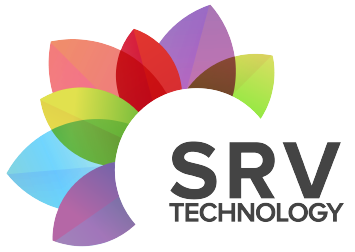Explore the best services and tools for managing a multicloud environment. This guide covers essential tools for seamless integration, monitoring, security, and cost management across multiple cloud platforms.
What Are the Best Services and Tools for Multicloud?
As businesses increasingly adopt multicloud strategies to leverage the strengths of different cloud providers, managing these complex environments efficiently becomes crucial. This guide highlights the best services and tools designed to streamline multicloud management, ensuring seamless integration, robust security, effective monitoring, and cost optimization.
Understanding Multicloud
Multicloud refers to the use of multiple cloud computing services from different providers. Businesses adopt multicloud strategies to:
- Avoid Vendor Lock-in: Gain flexibility and reduce dependence on a single provider.
- Optimize Performance: Choose the best services from each provider to meet specific needs.
- Enhance Resilience: Increase redundancy and availability by distributing workloads.
Key Multicloud Services and Tools
- Integration and Management Tools
- Terraform
- Overview: An open-source Infrastructure as Code (IaC) tool that allows you to define and provision infrastructure across multiple cloud providers using a consistent configuration language.
- Benefits: Provides a unified way to manage resources, supports various providers, and enables automated infrastructure deployment.
- Kubernetes
- Overview: An open-source container orchestration platform that helps manage containerized applications across different environments, including multiple clouds.
- Benefits: Facilitates consistent deployment, scaling, and operation of applications in multicloud environments.
- Terraform
- Monitoring and Observability Tools
- Datadog
- Overview: A monitoring and analytics platform that provides end-to-end visibility across your entire stack, regardless of the cloud provider.
- Benefits: Offers integration with various cloud services, real-time monitoring, and unified dashboards for multicloud environments.
- Prometheus
- Overview: An open-source monitoring system and time series database, ideal for monitoring dynamic cloud environments.
- Benefits: Highly adaptable to different environments, supports multi-dimensional data collection and querying.
- Datadog
- Security and Compliance Tools
- Palo Alto Networks Prisma Cloud
- Overview: A comprehensive cloud security solution that provides visibility, compliance, and threat protection across multiple clouds.
- Benefits: Ensures consistent security policies, real-time threat detection, and compliance across cloud platforms.
- HashiCorp Vault
- Overview: A tool for securely managing secrets and protecting sensitive data across various cloud environments.
- Benefits: Centralized secret management, access control, and encryption capabilities for multicloud security.
- Palo Alto Networks Prisma Cloud
- Cost Management and Optimization Tools
- CloudHealth by VMware
- Overview: A cloud management platform that provides visibility and optimization tools for cost management across multiple cloud providers.
- Benefits: Consolidates cost and usage data, offers recommendations for cost savings, and simplifies multicloud financial management.
- AWS Cost Explorer, Azure Cost Management + Billing, Google Cloud Cost Management
- Overview: Native cost management tools provided by AWS, Azure, and Google Cloud respectively.
- Benefits: Each tool offers detailed insights into cost and usage for its respective platform, with features to help manage budgets and forecast expenses.
- CloudHealth by VMware
Best Practices for Multicloud Management
- Centralize Management
- Use tools like Terraform and Kubernetes to centralize the management of your multicloud infrastructure, ensuring consistency and reducing complexity.
- Enhance Visibility
- Implement comprehensive monitoring solutions like Datadog and Prometheus to gain visibility into performance, health, and security across all cloud environments.
- Strengthen Security
- Deploy robust security and compliance tools such as Prisma Cloud and HashiCorp Vault to safeguard your multicloud infrastructure and ensure regulatory compliance.
- Optimize Costs
- Leverage cost management platforms like CloudHealth and native cloud cost tools to monitor, manage, and optimize your cloud spending effectively.
- Automate Processes
- Automate repetitive tasks and workflows using infrastructure as code (IaC) and container orchestration tools to increase efficiency and reduce the risk of human error.
Conclusion
Managing a multicloud environment can be challenging, but with the right services and tools, you can achieve seamless integration, robust security, effective monitoring, and optimized costs. By adopting best practices and leveraging solutions like Terraform, Kubernetes, Datadog, Prisma Cloud, and CloudHealth, you can harness the full potential of a multicloud strategy, driving innovation and resilience for your business.





.jpg)




.jpg)